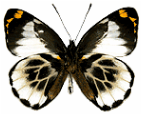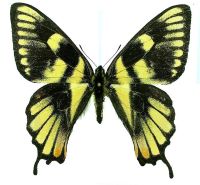-
dogeared

- Posts: 2
- Joined: Mon Jun 30, 2025 4:51 pm
Re: ID help with strange scorpion thing
by dogeared » Mon Jun 30, 2025 6:28 pm
-
livingplanet3

- Premium Member - 2025

- Posts: 720
- Joined: Tue May 24, 2022 4:55 pm
Re: ID help with strange scorpion thing
by livingplanet3 » Mon Jun 30, 2025 5:43 pm
https://en.wikipedia.org/wiki/Heterotoma_planicornis
https://www.naturespot.org/species/hete ... lanicornis
-
dogeared

- Posts: 2
- Joined: Mon Jun 30, 2025 4:51 pm
ID help with strange scorpion thing
by dogeared » Mon Jun 30, 2025 5:11 pm
I've never seen anything like this before and can't identify it.
I was sitting outside here in Suffolk England, having a drink and it was there underneath my glass when I picked it up.
It has six green legs plus two 'claw like' structures that it was waving around, they had a fat part then short thin jointed extensions. No actual pincers. It appears to have a wing case. It was about 12mm long.
Thank you
https://photos.app.goo.gl/Zy9b9Ffr9ExxMxYe9
https://photos.app.goo.gl/7sHe7BzB6J88qsMt7
-
livingplanet3

- Premium Member - 2025

- Posts: 720
- Joined: Tue May 24, 2022 4:55 pm
Re: Need help IDing gifted butterfly
by livingplanet3 » Mon Jun 30, 2025 2:47 pm
Thank you for pointing this out. This likely means that many of the specimens that I've seen labeled as palinurus, including ones in my own collection, are actually probably daedalus.adamcotton wrote: Mon Jun 30, 2025 9:50 am No it isn't. This is Papilio daedalus from the Philippines, a closely related but separate species...
-
wollastoni

- Site Admin

- Posts: 687
- Joined: Fri Mar 18, 2022 9:51 am
Re: Any French guiana entomologist
by wollastoni » Mon Jun 30, 2025 12:00 pm
Welcome here.
The few French Guianan entomologists that I know are working on Amazonian species only. They already have so much work studying their own fauna. I doubt they will be interested in entomo pins or European insects.
When and where do you go inside French Guiana ?
I will be there in November (Kaw, Saul and Belizon on the program).
-
adamcotton

- Global Moderators

- Posts: 1116
- Joined: Tue Mar 22, 2022 12:24 pm
Re: Need help IDing gifted butterfly
by adamcotton » Mon Jun 30, 2025 9:50 am
No it isn't. This is Papilio daedalus from the Philippines, a closely related but separate species. Note on the hindwing that the green band points directly at the 'eye spot' at the anal angle of the hindwing (inner edge below the tip of the abdomen), whereas in Papilio palinurus the green band ends above the 'eye spot'. It seems that Wikipedia doesn't know that there are two separate species in their 'Papilio palinurus'.
This species is not protected and perfectly legal to own in the USA. Also it is worth mentioning that Papilio daedalus from the Philippines is the species often exhibited in butterfly houses. This species is bred in large numbers, whereas the true Papilio palinurus is not.
Adam.
-
livingplanet3

- Premium Member - 2025

- Posts: 720
- Joined: Tue May 24, 2022 4:55 pm
Re: Need help IDing gifted butterfly
by livingplanet3 » Mon Jun 30, 2025 4:17 am
Further info -
https://en.wikipedia.org/wiki/Papilio_palinurus
-
n73

- Posts: 1
- Joined: Mon Jun 30, 2025 2:14 am
Need help IDing gifted butterfly
by n73 » Mon Jun 30, 2025 2:55 am
I would like to ask for help with a specimen shown below. I was gifted it as a kid in the mid to late 2000s. It's about 4 or 5 inches (10 to 13 cm) across and did not come with any location/species info. Sorry about the hideous mounting; I didn't know any better and was just trying to keep it from being damaged by sliding around in the case.
Someone elsewhere on the internet suggested it may be Papilio palinurus. Is this ID correct? Also, can anyone advise (informally—not official legal advice I know) on whether I can own this legally in the US? I have done my homework before posting and it looks like P. palinurus is not CITES listed but is protected in Thailand and I of course have no idea where this particular specimen is from or whether there are other laws I need to be considering.
Thank you for reading!
n73
-
kevinkk

- Premium Member - 2025

- Posts: 536
- Joined: Mon May 23, 2022 5:06 pm
super speed pupa
by kevinkk » Sun Jun 29, 2025 3:42 pm
The first 21 larva were put into 2 different containers , they burrowed in as soon as they hit the substrate, which in itself is not something I have ever noticed, at least with other burrowing species.
Now- the weirdest part of all, is that after 5 days in the substrate, at room temperature, which is 72 at my house, all were fully formed pupa, and I
removed them from the substrate, the remaining larva are taking the time I normally associate with the time it takes for larva to form pupa, more
like 10 days. I've never experienced larva doing this.
Ok, I can see one logical possiblity, and that was that the larve were mature long enough in the sleeve wandering, that some of the time was used up.
Does that make any sense? But that wouldn't explain the remaining lethargic larva, or the reality that I looked for mature larva everyday.
-
Dinosaur2004

- Posts: 1
- Joined: Sat Jun 28, 2025 10:42 am
Any French guiana entomologist
by Dinosaur2004 » Sat Jun 28, 2025 11:44 am
-
boghaunter1

- Premium Member - 2025

- Posts: 297
- Joined: Mon May 23, 2022 7:16 pm
Re: Beautiful Ab. P. canadensis
by boghaunter1 » Fri Jun 27, 2025 6:26 pm
Thank you very much to everyone for your positive compliments on the recent LUCKY collection of this rare aberration. I wish that same luck would help in winning a lottery!..
By the way... in my area, the summer of 2024, was also a very hot, dry season with drought-like conditions interspersed with brief cooler temps & heavy sporadic rain showers. Remember, last year, all the smoke from massive forest fires in W. Canada drifting far S. into the USA, causing breathing problems for millions! When the larva of this aberrant would have pupated in July-August '24, temps, for many days, reached well above 30 C = 86 F, with a number of days exceeding 34 C = 94 F... certainly favorable environmental conditions that may have contributed to the '25 production of this interesting aberration (as outlined by Adam Cotton above).
John K.
-
kevinkk

- Premium Member - 2025

- Posts: 536
- Joined: Mon May 23, 2022 5:06 pm
Re: Beautiful Ab. P. canadensis
by kevinkk » Fri Jun 27, 2025 4:47 pm
-
Paul K

- Posts: 231
- Joined: Mon May 23, 2022 6:44 pm
Re: Beautiful Ab. P. canadensis
by Paul K » Fri Jun 27, 2025 2:39 pm
And what are the odds that such unique specimen has had developed a „blister” ?!
Congrats
-
boghaunter1

- Premium Member - 2025

- Posts: 297
- Joined: Mon May 23, 2022 7:16 pm
Re: Beautiful Ab. P. canadensis
by boghaunter1 » Thu Jun 26, 2025 8:44 pm
John K.
-
adamcotton

- Global Moderators

- Posts: 1116
- Joined: Tue Mar 22, 2022 12:24 pm
Re: Beautiful Ab. P. canadensis
by adamcotton » Thu Jun 26, 2025 8:36 pm
The sudden cooling would have happened when the pupa formed BEFORE diapause, i.e. the previous year. As I mentioned before, temperature fluctuations have no effect on fully formed pupae.boghaunter1 wrote: Thu Jun 26, 2025 8:17 pm To conclude... during the month prior to the eclosion of this unique Swallowtail, & at a time when the butterfly would have been developing within it's chrysalis, it was continuously subjected to a host of extreme alternating temperature highs & lows. These sudden temperature shifts could certainly be responsible for this extreme aberration.
This hole in the wing was caused by a 'blister' forming in the wing membrane as the pupa starts to develop. After hatching, the butterfly expands its wings and while drying the blister bursts and the wing membrane over the blister breaks into small pieces as it dries, leaving this round hole in the wing. Such blisters can form in any butterfly wing, and are not related to the aberration.boghaunter1 wrote: Thu Jun 26, 2025 8:17 pm Also note that there is a roughly circular hole in this butterflies upper left wing... something I have observed before in other aberrant butterflies & was probably caused by desiccation & ensuing difficulties in expanding it's wings in the hot, dry weather.
Adam.
-
boghaunter1

- Premium Member - 2025

- Posts: 297
- Joined: Mon May 23, 2022 7:16 pm
Re: Beautiful Ab. P. canadensis
by boghaunter1 » Thu Jun 26, 2025 8:17 pm
A little back story to the weather/temps prior to netting this unusual Swallowtail. The month of May in Sask., as well as here in N.E. SK., was very cold & very dry, with drought conditions resulting in huge forest fires in northern SK... one fire N.W. of my location burned 1,125,000 acres (450,000 hectares)! Saskatchewan is a huge province... larger than Texas in area. May was also interspersed with short (1-2 days) & longer periods (every day for the last 9 days of the month) of abnormally hot daytime temps.
On May 30th, when I first caught this aberrant butterfly, the daytime temp. peaked at 33 C = 92 F & was the hottest day of the month. The previous 8 days (22-29 May) saw consistent high temperatures ranging from 24-31 C = 75-89 F. Mid May (13-21st) saw some very cold daytime temps (15 May daytime high of only 7 C = 45 F!)... the rest of the days, during that same time span, never broke 15 C = 59 F. As well, we experienced 3 nights of light frost (-1 to -2 C = 30 to 28 F) from 16-18 May. During the first week of May, we set a daytime record of 32 C = 90 F. on the 4th... I have personally, never experienced such a high temp. so early in the season. May 12th peaked at 29 C = 84 F.
To conclude... during the month prior to the eclosion of this unique Swallowtail, & at a time when the butterfly would have been developing within it's chrysalis, it was continuously subjected to a host of extreme alternating temperature highs & lows. These sudden temperature shifts could certainly be responsible for this extreme aberration. Anyone else collected any similar specimens (besides the regular marked fletcheri fm.)? As wollastoni said, this appears to be a fletcheri-like weather induced variation. It is interesting to note that during that week of butterfly watching, at the lilacs, I observed several hundred+ individual P. canadensis... all with completely "normal" tiger markings... except for one! I would also like to read the paper Chuck mentioned...
Also note that there is a roughly circular hole in this butterflies upper left wing... something I have observed before in other aberrant butterflies & was probably caused by desiccation & ensuing difficulties in expanding it's wings in the hot, dry weather. However, other than that imperfection, I am still amazed at how fresh & how vibrant the colors & patterns are on this specimen. Additional photos, when off the spreading board, in the next week or two.
Suffice it to say, I will be back in my lawn chair scanning the lilacs every spring, watching to see if any additional stunning aberrants show up!
John K.
-
adamcotton

- Global Moderators

- Posts: 1116
- Joined: Tue Mar 22, 2022 12:24 pm
Re: Beautiful Ab. P. canadensis
by adamcotton » Thu Jun 26, 2025 8:15 pm
It is quite possible that such sudden drops in temperature could be quite common in the canadensis habitat(s) that boghaunter1 frequents.
Adam.
-
58chevy

- Posts: 498
- Joined: Mon May 23, 2022 5:58 pm
Re: P multicaudata grandiosus
by 58chevy » Thu Jun 26, 2025 4:08 pm
-
wollastoni

- Site Admin

- Posts: 687
- Joined: Fri Mar 18, 2022 9:51 am
Re: Beautiful Ab. P. canadensis
by wollastoni » Thu Jun 26, 2025 2:59 pm
I thought the fletcheri-like forms were temperature triggered ab so I don't really understand how it can be inheritable. If you can share the paper Chuck, I would be interested to read it.
-
wollastoni

- Site Admin

- Posts: 687
- Joined: Fri Mar 18, 2022 9:51 am
Re: what would happen if I made up an inect and posted a want ad
by wollastoni » Thu Jun 26, 2025 2:58 pm
